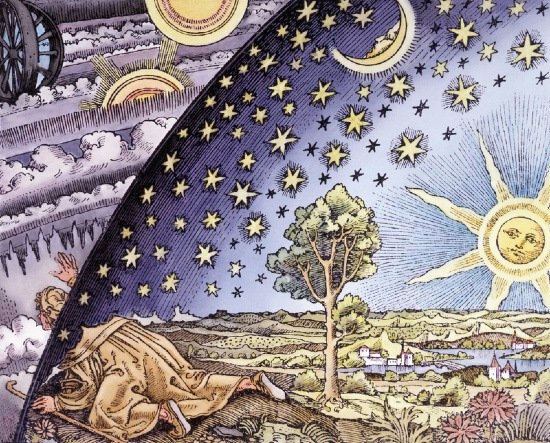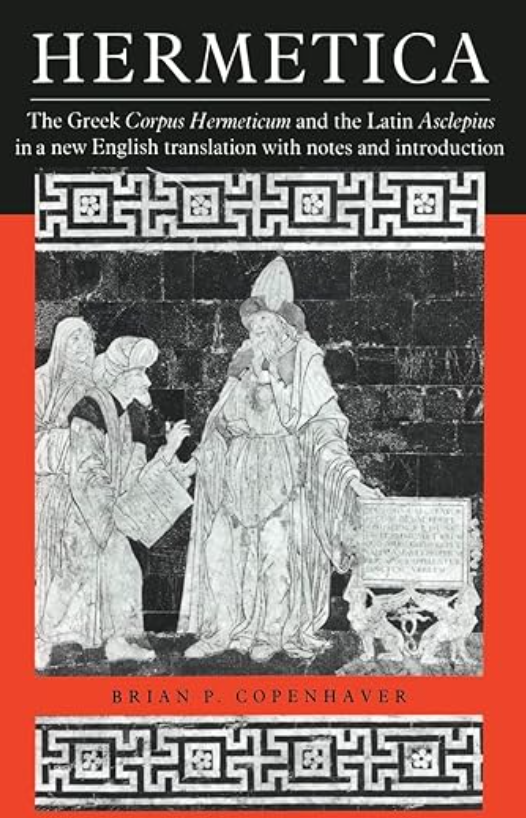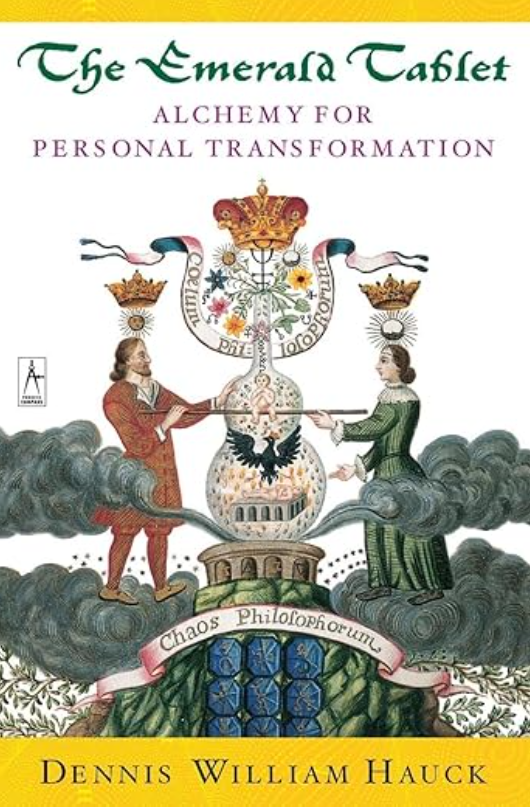
Hermeticism FAQs
Hermeticism vs Taoism?
Mastering the Laws or Flowing with the Way
Hermeticism and Taoism are two of the world’s most enduring wisdom traditions. Each offers profound insight into the nature of reality, the mind, and the path of the awakened human. While Hermeticism teaches us to understand and shape the universe through universal laws, Taoism teaches us to align and dissolve into the natural rhythm of existence.
Both recognize that the universe is intelligent and symbolic—but one moves through mental transmutation, while the other through effortless non-action.
-
An ancient spiritual philosophy from Egypt and Greece
Based on texts like the Corpus Hermeticum and The Kybalion
Teaches that the universe is mental and governed by 7 universal laws
Emphasizes self-mastery, symbolic understanding, and alignment with cosmic law
-
An ancient Chinese philosophical and spiritual tradition, originating over 2,000 years ago
Based on texts like the Tao Te Ching (by Laozi) and the Zhuangzi
Teaches that the Tao (The Way) is the source of all things—subtle, formless, and beyond conceptual grasp
Encourages surrender, harmony, and spontaneous alignment with the natural flow of life (wu wei)
Historical Context of Hermeticism and Taoism
Hermeticism and Taoism emerged in vastly different times, cultures, and cosmological frameworks—one in the Mediterranean basin shaped by philosophy and symbolism, the other in the Far East shaped by nature, simplicity, and paradox. Yet both traditions speak to the eternal human yearning to understand the source of life, and to live in harmony with it.
Hermeticism: A Sacred Synthesis of East, West, and Egypt
Hermeticism arose in Hellenistic Egypt around the 1st–3rd centuries CE—a period of intense intellectual and spiritual fusion. The Egyptian city of Alexandria became a melting pot of ancient Egyptian religion, Greek philosophy (especially Platonism and Stoicism), Jewish mysticism, and Babylonian astrology. Within this cauldron, the Hermetic writings were born.
Attributed to Hermes Trismegistus—a mythic figure combining the Egyptian god Thoth (scribe of divine wisdom) and the Greek god Hermes (messenger, magician)—these texts described a cosmology in which:
The universe is mental in nature
The human is a microcosm of the macrocosm
The path to divinity is through self-knowledge, inner purification, and alignment with universal law
Hermetic teachings were not meant for mass consumption. They were esoteric, preserved through mystery schools, alchemical traditions, and symbolic transmission. After periods of suppression, they re-emerged in the Renaissance, deeply influencing Western esotericism, from alchemy and astrology to Freemasonry, Rosicrucianism, and modern metaphysical thought.
Taoism: The Wisdom of the River and the Sage
Taoism, by contrast, emerged between the 6th and 4th centuries BCE—in ancient China. As political systems became more rigid and Confucianism emphasized order, morality, and hierarchy, a more natural and intuitive philosophy began to take shape through sages like Laozi (Lao Tzu) and Zhuangzi (Chuang Tzu).
At its heart was the Tao—the Way that gives birth to all things, yet cannot be grasped, named, or defined. In Taoist writings:
Nature is the greatest teacher
The wise live with simplicity, humility, and wu wei (effortless action)
The spiritual path is not one of control, but of alignment with the spontaneous rhythms of life
Taoism gave rise to alchemy, inner martial arts, energy cultivation (qigong), and subtle anatomy (like meridians and the dantian). Though it has both philosophical and religious expressions, Taoism always points back to non-conceptual awareness, returning to the Source not through mastery, but through yielding.
Two Traditions, One Question: How Shall We Live?
Hermeticism and Taoism arose in very different worldviews—one rooted in the logos, reason, and symbolic law; the other in the Tao, mystery, and graceful emptiness. But both offer initiatory paths of direct engagement with reality. Neither demands blind faith. Both encourage the practitioner to experience truth through practice, reflection, and communion with something greater than the ego.
In our modern world, these traditions continue to resonate because they offer complementary teachings:
Hermeticism guides those who seek structure, meaning, and inner power.
Taoism guides those who seek release, peace, and inner flow.
Together, they show that the soul can be shaped and softened. That wisdom is found in mastery and surrender. And that truth, though expressed in different symbols, flows from a common source—whether we call it the All or the Tao.
Key Comparisons of Hermeticism vs. Taoism
Mental Mastery vs. Mystical Surrender
Hermeticism seeks to understand and apply natural laws to shape reality—mentalism, vibration, and correspondence are tools of power.
Taoism urges us to let go of control and become empty, attuning to the Tao through effortless presence and natural spontaneity.
Law vs. Flow
Hermeticism views the cosmos as governed by universal, symbolic laws—order is to be understood and mastered.
Taoism sees the world as organically ordered but ultimately unknowable. The Tao cannot be named or grasped—only lived.
Cause and Effect vs. Cycles and Non-Resistance
Hermeticism emphasizes the Principle of Cause and Effect—you become a cause rather than a victim of circumstance.
Taoism emphasizes non-resistance to what is—letting things rise and fall, come and go, with grace.
Initiation vs. Simplicity
Hermeticism often involves initiatory rites, sacred geometry, and alchemical teachings passed through mystery schools.
Taoism encourages returning to the natural, the childlike, the spontaneous—no dogma, no fixed hierarchy, just deep presence.
Key Similarities of Hermeticism vs. Hinduism
Symbolic Universe
Both traditions see the world as filled with signs, patterns, and mirrored relationships.
Hermeticism: As above, so below.
Taoism: The ten thousand things arise from the Tao.
Inner Alignment as the Path
In Hermeticism, alignment with the laws leads to mastery.
In Taoism, alignment with the Tao leads to peace and natural wisdom.
Everything Flows
Hermetic Principle of Rhythm: everything rises and falls, cycles repeat.
Taoist insight: everything moves in and out of form like water—the softest thing can overcome the hardest.
Polarity and Balance
Hermeticism speaks of duality (light/dark, male/female, hot/cold) and teaches to transmute opposites.
Taoism reflects this in yin and yang—complementary forces whose dance creates the world.
Why Study Both?
Exploring both Hermeticism and Taoism expands your inner toolbox—one invites structured mastery, the other intuitive surrender. One teaches how to become a conscious co-creator; the other, how to dissolve into the creative flow itself.
By studying both, you begin to see that true wisdom holds paradox: the mind can shape reality and be released. The soul can strive and rest. Sometimes, we align by understanding—and sometimes, simply by letting go.
Both paths, approached with reverence, lead to harmony with the greater whole.
🔍 Explore More Esoteric Comparisons
Curious how Hermetic thought compares to other spiritual traditions? Continue your journey of discovery:
What Is Hermeticism? (Beginner’s Guide) →
Hermeticism vs Christian Mysticism →
Hermeticism vs Law of Attraction →
Note: Spiritual exploration of various thought systems isn’t to decide which one is “better” or more correct—it’s to expand your lens. Each tradition offers a unique language for describing the journey of the soul, the structure of the universe, and the human potential for awakening.
In true Hermetic fashion, learning from multiple wisdom traditions is a path to greater discernment, wholeness, and integration. Let these teachings be mirrors, not rules—tools that help you clarify your own experience of the divine.
Recommended Texts for Students of Hermeticism
-

Corpus Hermeticum
A collection of dialogues between Hermes and his disciples, covering topics such as the nature of the divine, the creation of the universe, and the path to spiritual enlightenment. It explores the relationship between the divine mind and human consciousness, offering a path toward spiritual awakening.
-

Emerald Tablet
A cryptic and poetic text that contains some of the most famous Hermetic aphorisms, including "As above, so below." This phrase encapsulates the Hermetic belief in the interconnectedness of all things and the idea that the microcosm (human experience) reflects the macrocosm (the universe).
-

The Kybalion
This text presents the foundational teachings of Hermetic philosophy. It outlines the 7 universal principles that govern the nature of reality, providing insight into the workings of the universe with practical guidance for spiritual growth, self-mastery, and understanding the deeper truths of existence.
Study with an Authentic Hermetic Lineage…
The tools, healings and secrets of the ancient mystery school traditions were once veiled, known only to the privileged elite—royalty, artists, scholars.
In these remarkable times, the doors are now open to the public, with wisdom unveiled for all who seek to take the journey on the path of self-mastery that has illuminated the minds of history's brightest souls…
Leonardo DiVinci, Nicola Tesla, David Bowie… These are just some of the remarkable people who studied in the mystery school tradition.
Are you ready?

